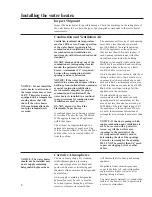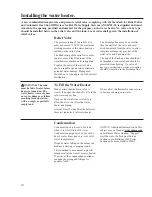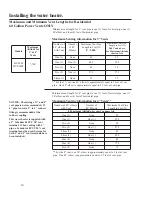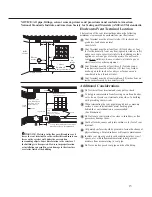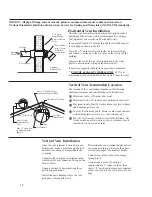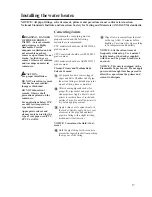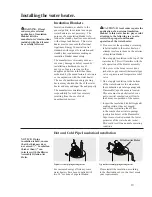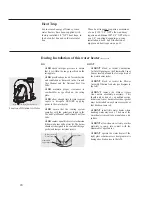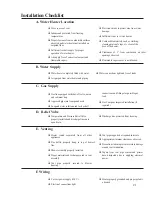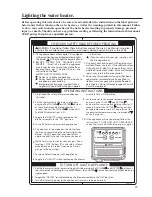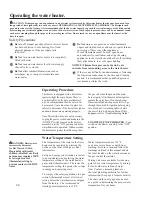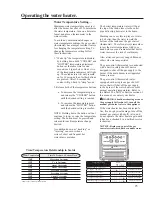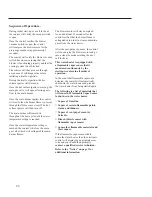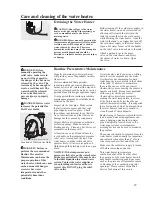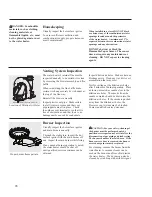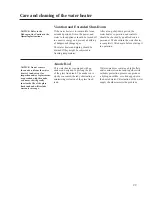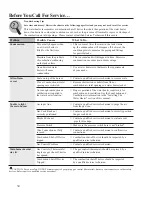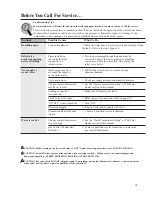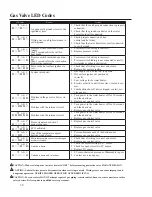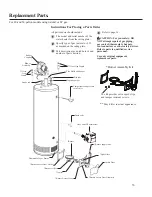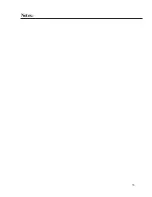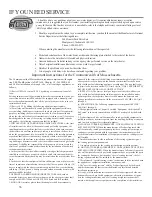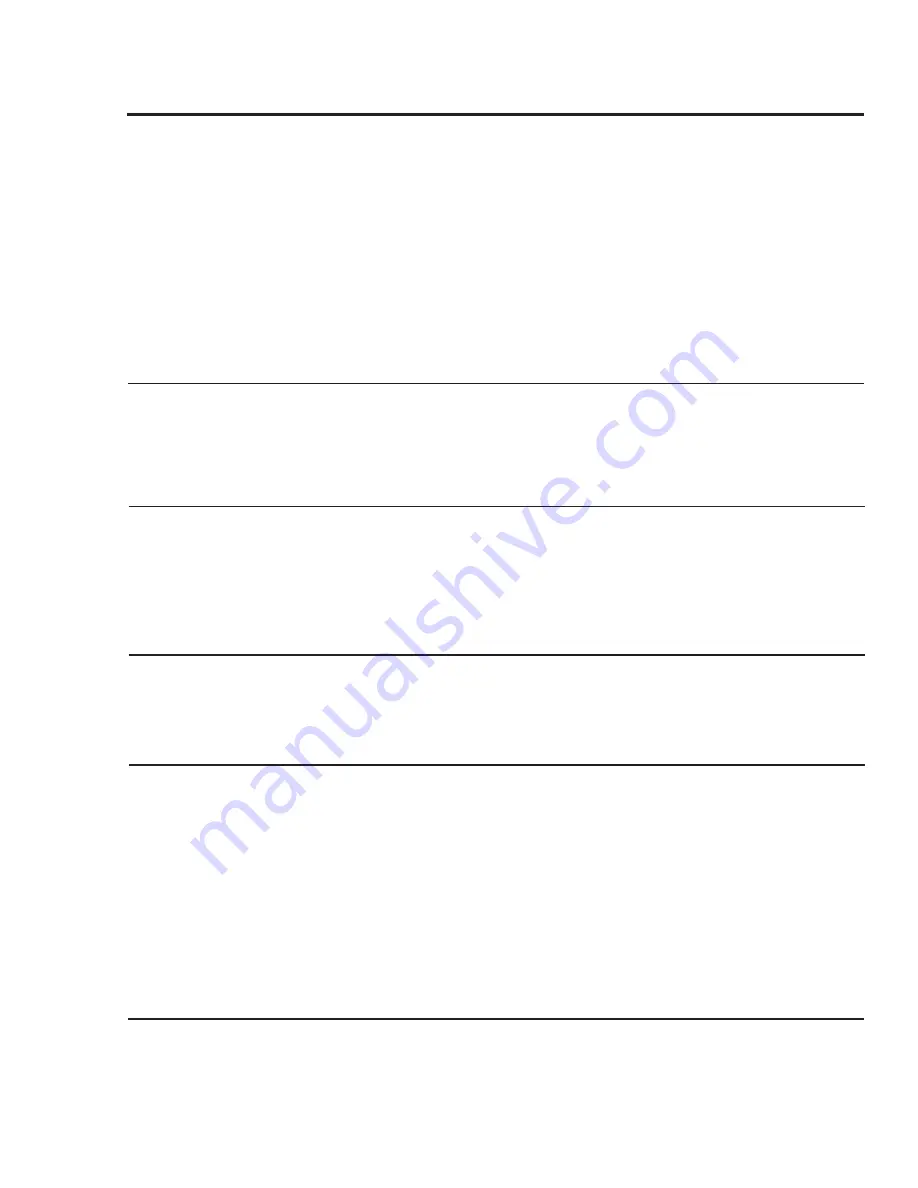
Installation Checklist
A. Water Heater Location
B. Water Supply
C. Gas Supply
D. Relief Valve
E. Venting
❑
Close to area of vent.
❑
Indoors and protected from freezing
temperatures.
❑
Proper clearance from combustible surfaces
observed and water heater not installed on
carpeted floor.
❑
Sufficient fresh air supply for proper
operation of water heater.
❑
Air supply free of corrosive elements and
flammable vapors.
❑
Provisions made to protect area from water
damage.
❑
Sufficient room to service heater.
❑
Combustible materials, such as clothing,
cleaning materials, rags, etc. clear of the
base of the heater.
❑
Clearances of 1” from combustion air inlet
openings observed
❑
Flammable vapor sensor is not blocked.
❑
Water heater completely filled with water.
❑
Air purged from water heater and piping.
❑
Water connections tight and free of leaks.
❑
Gas line equipped with shut-off valve, union
and sediment trap.
❑
Approved pipe joint compound used.
❑
Soap and water solution used to check all
connections and fittings for possible gas
leak.
❑
Gas Company inspected installation (if
required).
❑
Temperature and Pressure Relief Valve
properly installed and discharge line run to
open drain.
❑
Discharge line protected from freezing.
❑
Heater vented separately from all other
appliances.
❑
Flue baffle properly hung in top of heater’s
flue.
❑
Blower assembly properly installed.
❑
Proper materials and techniques used in vent
assembly.
❑
Vent pipe properly secured to blower
housing.
❑
Vent pipe supported at required intervals.
❑
Appropriate minimum clearances observed.
❑
Precautions taken to prevent moisture damage
around vent termination.
❑
Vapors from vent pipe cement and primer
have dissipated prior to applying electrical
power.
F. Wiring
❑
Correct power supply (120 V).
❑
Electrical connections tight.
❑
Heater properly grounded and proper polarity
observed.
21
Summary of Contents for PowerVent AP14236
Page 34: ...34 Notes...
Page 35: ...35 Notes...


